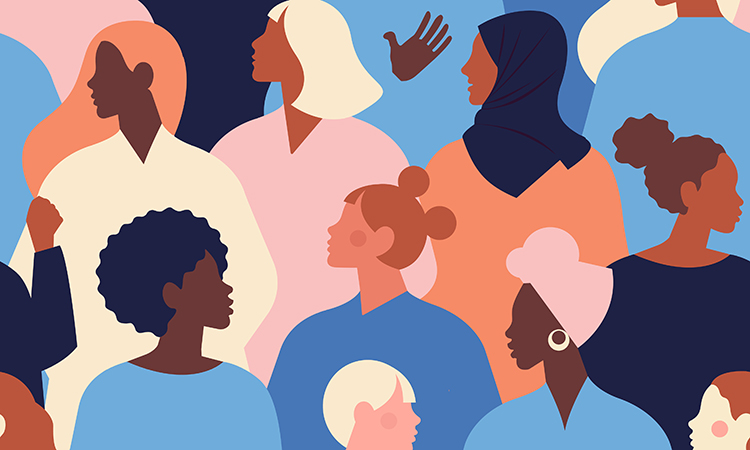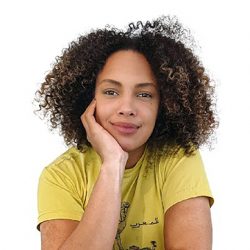Roundtable: Creating a more gender diverse and inclusive public transport industry
- Like
- Digg
- Del
- Tumblr
- VKontakte
- Buffer
- Love This
- Odnoklassniki
- Meneame
- Blogger
- Amazon
- Yahoo Mail
- Gmail
- AOL
- Newsvine
- HackerNews
- Evernote
- MySpace
- Mail.ru
- Viadeo
- Line
- Comments
- Yummly
- SMS
- Viber
- Telegram
- Subscribe
- Skype
- Facebook Messenger
- Kakao
- LiveJournal
- Yammer
- Edgar
- Fintel
- Mix
- Instapaper
- Copy Link
Posted: 29 June 2022 | Dottie Watkins - Capital Metro, Georgia Yexley - TIER Mobility, Sonya Byers - Women in Transport, Tamara Eelsing - STIB | No comments yet
This roundtable brings together key industry personnel and those passionate about sharing their opinions on gender diversity to discuss how the industry can work to improve the gender balance within the public transport workforce in order to better reflect our society and to better utilise a wider range of experience and knowledge.


There is no denying that public transport is a male-dominated industry, but a culture shift in recent years that has placed a spotlight on equality has seen operators and authorities across the globe increasing their efforts to improve their workforces’ gender balance.
This roundtable brings together key industry personnel and those passionate about sharing their opinions on gender diversity to discuss how the industry can work to improve the gender balance within the public transport workforce in order to better reflect our society and to better utilise a wider range of experience and knowledge.
  |
  |
  |
  |
|
Sonya Byers |
Tamara Eelsing |
Dottie Watkins |
Georgia Yexley |
| CEO, Women in Transport | Diversity Manager, STIB-MIVB | Deputy CEO, Capital Metropolitan Transportation Authority (Capital Metro) | General Manager – UK & Ireland, TIER Mobility |
How can the different experiences, points of view and knowledge that women bring to the table benefit the sector?
Sonya Byers: There’s a quote from Caroline Criado Perez’s book Invisible Women that has stuck with me: “They didn’t deliberately set out to exclude women. They just didn’t think about them. They didn’t think to consider that women’s needs might be different.”
Transport is about connecting people and places – by not having an equal representation in our workforce, we are missing out on the valuable experiences, views and knowledge of these women that would help us to shape our systems and places”
Women make up 51 per cent of the UK population, the female employment rate is almost 72 per cent and women make up the majority of public transport users. Yet, women are significantly under‑represented in the transport sector, accounting for around 20 per cent of the workforce. Transport is about connecting people and places – by not having an equal representation in our workforce, we are missing out on the valuable experiences, views and knowledge of these women that would help us to shape our systems and places so that they better serve the different people that use them.
Tamara Eelsing: Normally, I would answer that it is not so much women that can bring extra value to the table, but instead feminine leadership capabilities. Feminine leadership capabilities are traits that are traditionally attributed to women, but which may be shown by men, as well (just as women may portray masculine leadership capabilities), such as empathy, long-term vision, risk aversity etc. However, I feel that, in public transport, there is an extra element, which is very much linked to actually being a woman, and that is their experience as women using public transport. Women tend to use public transport at different hours, for different purposes and because of different reasons than men. These experiences are invaluable to improving the experience for all.
Public transportation is designed to serve a broad range of community members. To best serve the diverse needs of our public, we need to bring diverse experiences to the work that we do”
Dottie Watkins: Public transportation is designed to serve a broad range of community members. To best serve the diverse needs of our public, we need to bring diverse experiences to the work that we do. As women move through the world, they have different concerns than men – for example, women are almost twice as likely to have been a victim of sexual harassment or sexual assault. As a result of this lived experience, women will bring a perspective to the table that is critical to understanding the needs of our community. The goal should be to make sure that you have diversity of experience and diversity of thought represented as you consider solutions to your problems.
Georgia Yexley: Women represent over 50 per cent of the UK population, and our experiences and opinions are therefore extremely valuable to all sectors who want to ensure that their products are serving and benefiting a wide cross-section of society. It is also borne out by extensive research that women’s inclusion and representation in organisations has a tangible impact on business and financial success. Yet, despite these facts, women’s input and experiences are all too often overlooked by many sectors, including the transport sector.
Women offer unique insights that should be central to decisions made in the transport sector. The latest research and roundtables led by both TIER and other government bodies and networks have demonstrated that it is often women who raise concerns about personal safety in public spaces.
Without women’s voices both within our sector and being listened to from outside, how can we expect to serve women with our services?”
At TIER, we recently conducted research alongside the social enterprise Safe & the City, which found that, when night falls, fears about personal safety become the top worry for women – replacing daytime concerns about the behaviour of road users. Eight out of 10 women want to park their micro‑mobility vehicles in a well-lit area; three quarters of women in UK cities only like to park where there is CCTV; and women prefer to take a safer route over the fastest. These sorts of insights from women are incredibly valuable and should be central in deciding how transport systems, networks and the wider urban space are built and structured.
As an industry, our success and ability to deliver benefits is reliant on positive community engagement and mass adoption. Without women’s voices both within our sector and being listened to from outside, how can we expect to serve women with our services?
What are the challenges that women face when looking to enter or become more prominent in the public transport industry, and what can be done to combat them?
Byers: Research illustrates that gender stereotyping, bias and workplace/job design present challenges for attracting women to and retaining them in the transport sector.
Our 2021 research from the All Party Parliamentary Group (APPG) for Women in Transport asked women and men about their experiences and perceptions of working in transport1. We found that 75 per cent of women felt that it was easier for men to progress than women, and 82 per cent of women felt that unconscious bias is an issue. We also found that 70 per cent of women had experienced discriminatory behaviour or language.
The Department for Transport’s (DfT) ‘Enhancing equality, diversity and inclusion for transport infrastructure skills’ report2, published in 2021, highlights key challenges for gender equality in the sector. It clearly demonstrates how bias and stereotyping, combined with the reality that most women carry most of the domestic load and care responsibilities, are limiting women’s progression. The report reinforces the challenge around personal conduct that we found in the APPG research.
The DfT report puts a spotlight on workplace design, where women are excluded by not having adequate facilities, safe personal protective equipment (PPE) or adapted equipment. These are things that organisations could easily and quickly resolve.
As to what else can be done – we need change!”
A recent whitepaper from the Diamond EU project3 made recommendations for attracting more women into transport, including flexible working available for men and women, more women in senior roles and school engagement. There was a commonly reported theme that ‘you can’t be what you can’t see’, thus specific women in transport groups and educational events were cited as examples of support received that positively impacted women employees and a more equal gender balance in the industry.
As to what else can be done – we need change! Look at the data and put in place policies, frameworks and practices that address the barriers for women and support their progression. The 2021 DfT report points to Iris Bohnet’s evidence-led book, What Works: Gender Equality by Design Framework, and that’s a great place to start. We also make a number of recommendations in the APPG research for industry, employers and the government.
Eelsing: There are multiple challenges for women to enter and grow in the public transport industry. First of all, there is the systemic problem of women in STEM (science, technology, engineering and mathematics) professions. Young girls are, often unconsciously, oriented by the adults in their life towards caring professions and young boys towards STEM professions. The result is a strong underrepresentation of women in technical studies at all levels. This is something that needs to be attacked at primary and secondary school levels. The European Commission (EC) Women in Transport working group has, therefore, developed an educational tool in 24 languages that schools can use to check for and counter biases4.
Second, men and women share biases about the driving capabilities of women. There are many ‘memes’ dedicated to the subject, and they all involve silly accidents. This self-bias, combined with the huge responsibility of driving a public transport vehicle, might put women off applying for such a position.
Once in the company, women might have to prove themselves and show that they are equally as, if not more, capable as men. Also, a technical background, which we’ve just concluded that not many women have, might prove to be a career accelerator in public transport companies. We also know that leaders tend to look for people who are like them, so that’s a third bias that might complicate the careers of women in this industry, as most public transport companies are traditionally ‘male companies’, thus with male leadership. This means that managers need to be extra careful in selecting the talents to promote, assisted by a well-educated recruitment team that challenges obvious choices.
Other than these three biases, there are some practical constraints that need to be solved to attract more women to public transport. Working in shifts might be the biggest obstacle to tackle, but even basic facilities such as toilets and changing rooms are sometimes not available to women.
Frankly, to combat the issues of a ‘man’s world’, we need to make this a ‘people’s world’ by promoting and supporting women, at all levels and in all roles”
Watkins: Many of the roles that support public transportation projects, operations and systems are in fields traditionally held by men. As a woman in this ‘man’s world’, each of us needs to not only push for our own advancement, but also bring other women along with us. It has been my experience that, as the mix of men and women becomes more balanced on a management team, the experience of women in the workplace improves. Frankly, to combat the issues of a ‘man’s world’, we need to make this a ‘people’s world’ by promoting and supporting women, at all levels and in all roles.
Yexley: Women are often framed as being ‘under-represented’. However, a more appropriate term would be that women have been historically and systemically excluded.
It is well-known that most people lean into their unconscious bias when hiring – hiring those that are ‘like them’ – which has led to an oversaturated industry of white men. Research by Glenn Lyons, a Professor of Future Mobility at The University of the West of England, points to the chain reaction of white men in the transport sector – and how they design transport systems and make decisions for the white men in society, despite the fact that 51 per cent of the population are female and 14 per cent are not white.
If we are to enact real change in the industry, we must consider and acknowledge the intersectionality of barriers. Gender, race, class and nationality are just a few ways of categorising and distributing privilege – and should always be considered when designing transport systems and infrastructure.
It is never the work of the excluded to seek inclusion – it is up to those who are already in the industry to seek the diversity needed to improve our sector”
Though I have experienced my own barriers as a Black mixed-heritage woman, I have had the privilege of accessing higher education, which gave me the opportunity to travel, live and work in China at a time when the industry was just setting off – which, ultimately, has given me the experience to have influence in the sector today.
Now in that position of privilege, I have a responsibility to open up the path to others. It is never the work of the excluded to seek inclusion – it is up to those who are already in the industry to seek the diversity needed to improve our sector.
How can the industry work to both encourage more women to take advantage of the opportunities that are available in public transport, as well as challenge the false perception that it is an industry best suited to men?
We need to break this bias at all levels – in education, in society and within our companies. Everything a man can do, a woman can do equally well, but we need to make sure that women and men start believing that”
Eelsing: As the theme of International Women’s Day 2022 says: “break the bias”. We need to break this bias at all levels – in education, in society and within our companies. Everything a man can do, a woman can do equally well, but we need to make sure that women and men start believing that. I also believe that technology will help us in the future to better plan the work, which enables people to better combine their work and private life. With the increasing ageing population, we also might want to shift our targeted talent pool for drivers; why not focus, for example, on people who are slightly older and who do not have small children at home, or focus on career shifters?
Watkins: Tell our story! Hearing the stories of successful women in this industry has been quite meaningful to me over the course of my career. It helps to know that a woman you relate to – someone who looks like you, someone with similar lived experiences as you – has found success. Hearing their story is not just motivational, but provides a concrete example of how success can be achieved. I believe that the more of these stories women and girls hear, the more likely they are to envision themselves achieving that success. And, once you can envision it, almost anything is possible.
Yexley: I believe it’s a false perception that the industry does not attract women. Women are applying and they are qualified. The question isn’t how can the industry encourage more women to apply – it is when will the industry employ them?
I want to see more women of all backgrounds here, because I truly love my job in a sector where we have the opportunity for genuine positive impact on people, place and planet”
If it were not the case, we wouldn’t have so many brilliant women on team TIER in the UK! This goes back to my previous answer – we need to finally break that chain reaction of white men in the transport sector, encouraging people to recognise their unconscious bias and ensure they are not only hiring people ‘like them’.
Series like this, while they can certainly appear more often outside of International Women’s Day, go a long way to shining a light on the positive impact and experiences held by women in the sector. I want to see more women of all backgrounds here, because I truly love my job in a sector where we have the opportunity for genuine positive impact on people, place and planet. I want to see others with the passion for positive change thrive in this environment, too.
Do you think that enough is being done by the industry to improve gender diversity, or is there still a long way to go?
Byers: The Transport Infrastructure Skills Strategy (TISS) set an ambition to have gender parity in the transport workforce with the UK population by 2030.
TISS also set a target for 20 per cent of technical and engineering apprenticeship starts to be female by 2020. Despite collective and significant efforts by the Strategic Taskforce for Apprenticeships in Transport between 2016 and 2020, the total percentage of female starts in technical and engineering apprenticeships increased by two per cent to 12 per cent.
I think it’s clear that we still have some way to go as an industry to improve gender diversity. But there are some fantastic organisations doing great work on equality, diversity and inclusion”
I think it’s clear that we still have some way to go as an industry to improve gender diversity. But there are some fantastic organisations doing great work on equality, diversity and inclusion, and we highlight some of these in our APPG research and whitepaper.
It’s important that we work together, share best practice – what works and what doesn’t – and collaborate to progress faster on diversity and inclusion. Our Women in Transport Diversity and Inclusion Bus Group5 does just this, and we are excited to be launching the Inclusive Employment Journey in conjunction with the Confederation of Passenger Transport to support the sector.
We welcome the new government consultation to help to better understand the future skills needed to boost diversity, plug the skills gap and promote careers across the industry. We are also excited to see the launch of the DfT’s Transport Employment and Skills Taskforce6 (TEST), during National Apprentice Week 2022, led by our Patron, Rachel Skinner CBE.
Eelsing: I think that there is a lot being done to improve gender diversity, but I also believe that there is still a long way to go. The current scarcity on the employment market forces us to make sure that we include the whole and not half of the population in our recruitment efforts. So, there is a strong effort to attract women, not only because it’s the right thing to do, but simply because we need to.
On the other hand, you can’t change society in a couple of years. For example, women in STEM professions is something that will take generations to improve. However, it is possible to have enormous shifts in culture in society – look at smoking in public or our attitudes towards electric cars. I strongly believe that this will be possible for gender equality, as well.
For real change to occur, however, that recognition needs to be followed with concrete actions to reverse course”
Watkins: Diversity amongst public transportation agencies and firms varies greatly. I think that the industry has done a good job in recognising the need to embrace diversity. For real change to occur, however, that recognition needs to be followed with concrete actions to reverse course.
Yexley: We’re at the point of awareness. In other words, we know that change needs to happen, and that gender diversity, amongst other barriers – especially race – remains a serious issue within the industry. However, we now need to move the focus from awareness to action. It is not enough to simply acknowledge but to fail to act. The limited data we have demonstrates that we have a long way to go – so we must start now if we want to make an impact.
What advice would you give to those thinking about pursuing a career in public transport?
Byers: I am a firm believer that there is a job for everyone in transport. You will really be doing something that makes a difference to people and contributes to society if you pursue a career in public transport. It’s important to have support throughout your career, so join a network, look for and engage with mentors and sponsors who can guide you and be open to the possibilities and opportunities that the sector can offer.
Eelsing: Just do It! Apply! Don’t rule yourself out. Public transport has a lot to offer; a great diversity in people and jobs, often stable jobs and it gives you the opportunity to make an impact. Public transport facilitates life. Without us, children cannot go to school, people cannot go to work, visit hospitals, go shopping, go to sport clubs, etc. If we don’t perform, cities stand still. Public transport makes the country move!
Watkins: Don’t shy away from jumping in and figuring it out as you go. As an industry, we are constantly striving to do more – serve more people, be more efficient, better support our communities and so on. Be honest about your experience and skills, but then give it your all to produce the best work possible. You will be amazed at what you can accomplish with this mindset – and others are likely to be amazed, as well.
Yexley: This industry is full of people that want to make a tangible, positive difference to people’s everyday lives – whether it’s encouraging people to live more sustainably, to get active or to help people to move around their city more easily, whatever their location, background or income. I’ve met so many inspiring people in this sector and believe that it can be truly progressive because transport touches everyone’s lives. I would go so far as to say that access to transport is a human right. My advice is to look for peers that align with your values and goals. Look at a company’s values, experience and impact, and consider whether you would like to be a part of that story.
The same goes for those who are already in the sector. Make space in your day to engage with those that are seeking to know more about public transport. I cannot tell you how many dissertation interviews and brief chats I fit into a week. And, whilst I’ve got a day job to do, bringing more passionate people into the space will only help me in the long run – and that goes for everyone else, too.
References
- https://www.womenintransport.com/our-blog/gender-perceptions-and-experiences-working-in‑transport
- https://www.gov.uk/government/publications/transport-infrastructure-skills-improving-equality-diversity-and-inclusion
- https://diamond-project.eu/wp-content/uploads/2022/01/short-DIAMOND-WHITE-PAPER-Employment-for-ITF46.pdf
- https://transport.ec.europa.eu/transport-themes/social-issues/women-transport/attractiveness-transport-sector/educational-toolkits-help-fight-gender-stereotypes_en
- https://www.womenintransport.com/bus
- https://www.gov.uk/government/news/call-for-transport-leaders-to-help-super-charge-skills-and-build-future‑workforce
Issue
Issue 1 2022
Related organisations
Capital Metro, STIB (Société des Transports Intercommunaux de Bruxelles), TIER Mobility, Women in Transport
Related people
Dottie Watkins, Georgia Yexley, Sonya Byers, Tamara Eelsing



